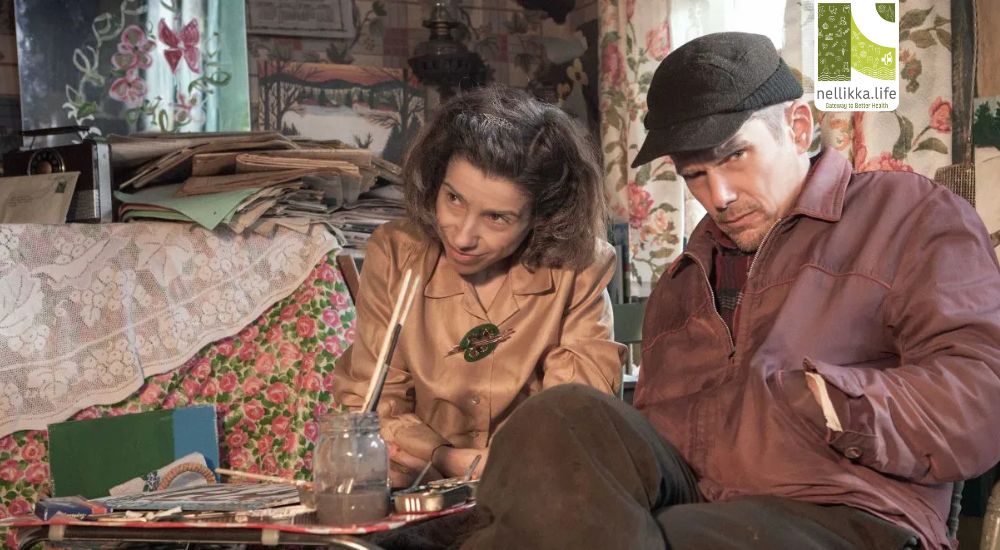Discovering Maudie: A Heartfelt Tale of Resilience and Art

Maudie (2016), directed by Aisling Walsh, beautifully adapts the real-life story of Canadian folk artist Maud Lewis—a woman who, despite lifelong arthritis and limited opportunities, painted joy and color across a tiny 12×12’ cottage in 1930s Nova Scotia .
1. A Life Framed by Adversity – And Beauty
Maud Lewis (born March 7, 1903) battled juvenile rheumatoid arthritis from childhood. This condition left her bent and her hands crippled—yet she still found solace and creative freedom in painting [1].
“As long as I have a brush in front of me, I’m all right.”
These words, mirrored in both the real Maud and Sally Hawkins’s portrayal, epitomize how painting became her lifeline .
2. Two Outsiders Finding Harmony
In her 30s, Maud answered an ad placed by Everett Lewis for a housekeeper. It led to marriage—and the transformation of Everett’s austere shack into a canvas for her art. Their relationship evolves from mistrust to deep companionship, depicted with nuance in the film.
As Maud’s creativity blooms, Everett becomes both her protector and manager, albeit with occasional tension that reflects the real struggles of love and disability [2]
3. Art Out of Simplicity
Maud Lewis painted daily on scrap boards, cookie tins—even the walls, stove, and door of her home. These whimsical scenes of animals, flowers, and landscapes were charmingly naive but deeply heartfelt.
The film recreates this vividly—the pace and detail capturing her devotion:
“Oscillating between moments of pain and ones of inspiring artistic expression”
4. From Local Curiosity to International Recognition
Despite poverty, Maud’s bright postcards and paintings attracted attention. A New York patron purchased her work, and by the 1960s, she was celebrated nationally—even the White House acquired her art .The film sparked renewed interest—gallery visitors grew, and auction prices soared, underscoring her lasting legacy[3]
5. A Tribute in Film
Maudie won critical acclaim, sweeping awards:
- Sally Hawkins earned widespread praise, highlighted for capturing Maud’s diminutive stature and arthritic movement[4]
- Ethan Hawke was lauded for his portrayal of Everett’s gruff-yet-caring transformation
- The production meticulously recreated Maud’s house—echoing its original 12×12’ dimensions and colorful interiors [5]
Why Maudie Matters
- A celebration of folk art: It highlights how creativity can flourish outside mainstream art institutions.
- A study of disability and resilience: Maud’s story reminds us that limitation isn’t a life sentence—it can spark profound expression
- A portrait of love and companionship: It shows how acceptance and support can nurture talents even in the unlikeliest pair.
- A portrait of Nova Scotia’s landscape and culture: Through its visuals, the film brings alive rural Canada in the 1930s.
Maudie is more than a biopic—it’s a cinematic ode to the human spirit. Through Sally Hawkins’s tender performance, Aisling Walsh’s vision, and Maud Lewis’s real-world legacy, audience is reminded that beauty and purpose can emerge from struggle and simplicity. It invites us to see the extraordinary in the ordinary—paint brush in hand, heart in bloom.




